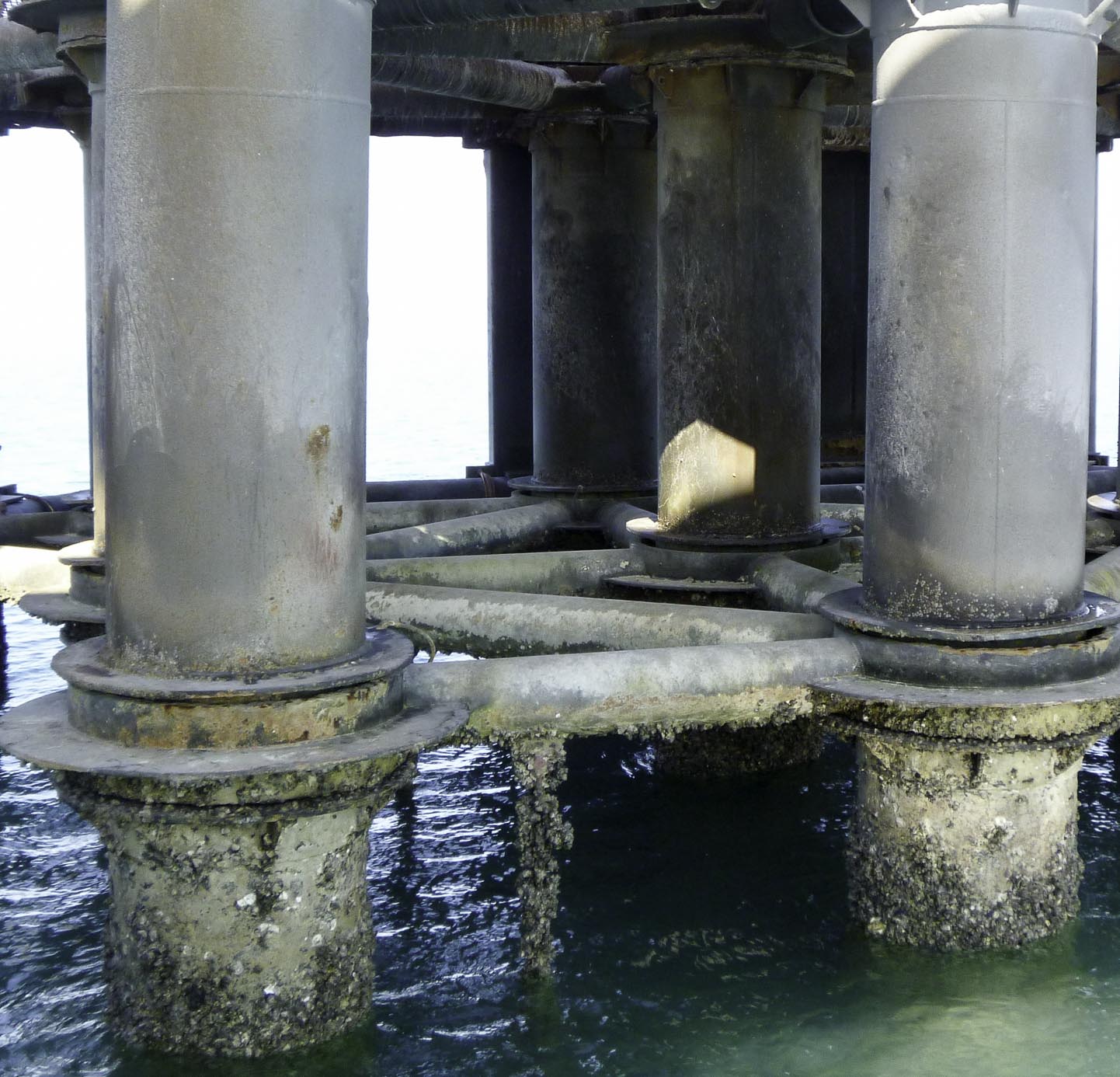Cathodic protection (CP) may be used on immersed steel piles to protect them from corrosion below mean sea level. A by-product of a properly functioning cathodic protection (CP) system is gradual formation of inorganic protective coatings on uncoated steel piles in sea water. The coating consists of a mix of silicates, carbonates and hydroxides. The formation of the coating results in a reduction in current density demand, which can assist with lower operating costs. A disadvantage of natural inorganic coatings is that the pH is rather alkaline. Once the CP is switched off (or stops working), rapid macro-cell corrosion can initiate at breaks in the coating. Resulting in a greater rate of corrosion than that expected at imperfections in a painted or wrapped pile.


